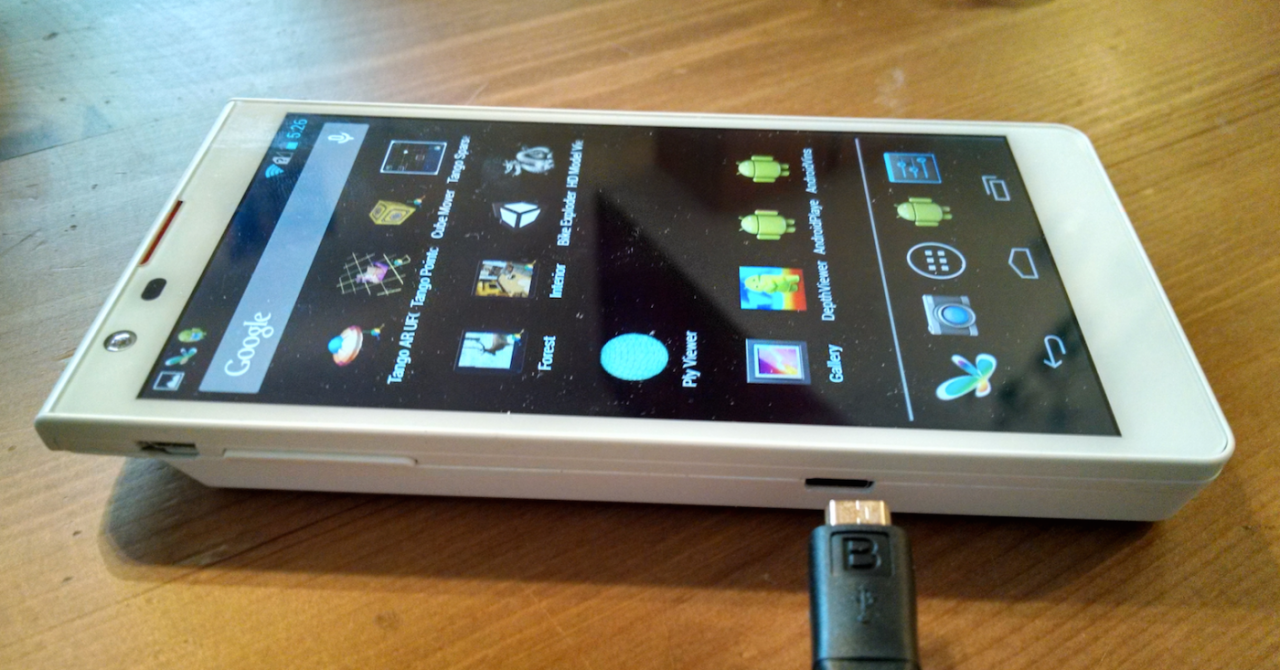
Researchers at the University of Pennsylvania have hooked up one of their flying robots, known as a quadrotor, to Google’s Tango smartphone. Google’s Project Tango is a 5-inch Android smartphone equipped with the Myriad 1 vision processor, which combines intelligent vision with power efficiency. The phone has a number of capabilities that can benefit the robot, such as a motion tracking camera, depth sensor, and vision processors capable of tracking its position and creating real-time 3-D maps. The device enables the robot to navigate itself autonomously.
Professor Vijay Kumar, who is leading the project at the GRASP laboratory (General Robotics, Automation, Sensing and Perception), explains that one of the most challenging aspects of creating flying robots is the development of software and hardware to give them autonomy. Although many robots use GPS systems for guidance, they must rely on tracking systems, such as OptiTrack and Vicon, and these require the installation of sensors on ceilings and walls. The Tango smartphone enables the quadrotor to localize itself without depending on either GPS or external sensors.
The quadrotors being developed by the GRASP team are modeled on the swarming behaviors of fish, insects and birds. One of the greatest challenges is being able to develop flying robots that do not crash into obstacles or into each other. Eventually, with the help of devices like Tango, the robots may be able to survey geographic locations and even build structures.
NASA has been working on a similar project using Tango. NASA engineers have been using the device to create a robotic platform with the ability to fly around the International Space Station in zero gravity. The flying robot is designed to help astronauts, and perform basic maintenance. The platform, known as SPHERES, uses the Tango smartphone to maneuver in small spaces without crashing into anything, as well as create a 3-D map of the interior of the space station to aid its navigation.
Image credit: Slashgear







